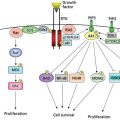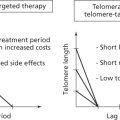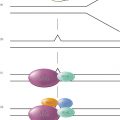Neoplasms of the adrenal cortex
Tito Fojo, MD, PhD
Overview
Adrenocortical cancer (ACC) is a rare malignancy, with varied presentations and a poor prognosis. Imaging studies have emerged as central to a work up, and in most cases a biopsy is not needed and should not be performed. Pathologic examination is very valuable with the Weiss criteria used to discriminate a small adenomas from carcinomas. Management is multidisciplinary and includes surgical resection or ablation, oral mitotane, intravenous chemotherapy, and palliative radiation. Surgery remains the only proven curative option, must be considered at presentation, and relapse with laparoscopic resection avoided. Mitotane is approved for the treatment of inoperable functional and nonfunctional ACC and its clinical value is primarily as an anti-hormonal agent. In a patient whose tumor is producing an excess of hormones mitotane is indispensable, however, its use in the adjuvant setting is uncertain. Replacement steroids are needed. Systemic chemotherapy using mitotane in combination with etoposide, doxorubicin, and cisplatin (EDP-M) or with streptozotocin (S-M) are the preferred options. These should not be discarded in favor of a “novel targeted therapy”, none of which have shown any proven efficacy. Increasing evidence suggests that palliative radiation therapy is beneficial for patients with metastatic disease. Radiofrequency ablation (RFA) or cryoablation have emerged as surgical adjuncts or stand-alone modalities for recurrences. As with most rare diseases, enrollment in clinical trials is strongly encouraged.
Introduction
Adrenocortical cancer (ACC) is a rare malignancy, with an estimated incidence of 1.5–2 per million per year. Patients can present without symptoms, with local symptoms from a large, locally invasive primary tumor, or with the systemic manifestations of endocrine hypersecretion. A multidisciplinary approach to treatment is essential as the disease presents many management challenges.
General
The 5-year survival is ≈10–25% with average survival from diagnosis of ≈14.5 months. Biochemical evidence of hormone excess can be found in ≈50% with ≈10–20% presenting with Cushing’s syndrome. Other symptoms include hirsutism in females and gynecomastia in males. Several reviews provide in-depth summaries.1–5
Evaluation and work-up
Initial evaluation should include a history, physical examination, with blood and urine studies to determine if tumor is functional. Computed tomography (CT) or magnetic resonance imaging (MRI) is often diagnostic. Both can help differentiate benign adenomas from malignant lesions.6–9 MRI is superior in identifying liver metastases and extent of vascular invasion, especially the inferior vena cava. 18F-fluorodeoxyglucose positron emission tomography (FDG-PET) can help assess extent of disease and may be valuable before a major surgery. However, FDG-PET is not of value for monitoring progress and should not be used as the primary modality.10–13
The role of a biopsy
Most patients presenting with an adrenal mass suspicious for malignancy should have surgery and not a diagnostic biopsy given risk of seeding tumor, and difficulty differentiating benign from malignant in a small biopsy.14–16 Surgery can be performed without a biopsy in a patient (1) with evidence of hormone excess, where diagnosis of ACC is not in doubt or (2) without evidence of hormone production but with an isolated adrenal mass found during evaluation or incidentally on an imaging scan. Only with widespread metastases that make surgical resection unlikely to provide benefit or if disease elsewhere suggests a primary location other than adrenal, should a biopsy be performed.
Pathology
To distinguish a small ACC without local spread or distant metastases from a benign adenoma, the “Weiss criteria,” first proposed in 1984, are used.17–22 Weiss, noted nine criteria most useful in distinguishing malignant from benign: (1) nuclear grade III/IV, (2) mitotic rate >5 per 50 high-power fields, (3) atypical mitoses, (4) tumors with ≤25% clear cells, (5) diffuse architecture, (6) microscopic necrosis, (7) venous invasion, (8) sinusoidal invasion, and (9) capsular invasion. The presence of ≥3 criteria is the threshold for malignancy.
The Weiss criteria were developed to discriminate a small adenomas from carcinomas, but their prognostic value in larger tumors is not established. In 42 patients with a diagnosis of ACC, only mitotic rate had a strong statistical association with outcome.18 Tumor weight >250 g, size >10 cm, atypical mitoses, and capsular invasion showed a marginal association with poor survival (P < 0.06). However, other criteria were not associated with survival. A recent study confirmed the importance of mitotic rate.22
Management of ACC
Options include surgical resection or ablation, oral mitotane, intravenous chemotherapy, and palliative radiation. Although controlled trials are generally lacking, this does not mean evidence is lacking nor does it mean anything is an option.
Surgical resection
Surgery remains the only proven curative option and must be considered at presentation and relapse. At presentation consider only complete resection of local disease given survival <1 year in patients with incomplete resection.2, 23, 24 The key at presentation is an open procedure by an experienced oncologic surgeon. While some argue laparoscopic surgery can be used in selected patients, the occurrence of peritoneal dissemination—a lethal complication—should discourage any approach other than open resection. Laparoscopic surgery for adrenal incidentalomas that do not seed the abdomen is appropriate. However, intraoperative tumor spill rates as high as 50%—even by experienced surgeons—have been reported.25, 26 A study summarizing outcomes in 152 ACC patients27 concluded that for ACCs ≤ 10 cm in diameter, laparoscopic was not inferior to open adrenalectomy. However, after extensive preselection only 23% underwent laparoscopy with one-third converted to open. These results in specialized referral centers have very limited to no applicability in the general community. In addition, laparoscopic resections have a higher incidence of positive margins and more rapid recurrence. A systematic review of laparoscopic surgery concluded, “There is no prospective randomized series to guide or endorse the use of laparoscopic resection for adrenocortical carcinoma.”28
Stay updated, free articles. Join our Telegram channel

Full access? Get Clinical Tree







